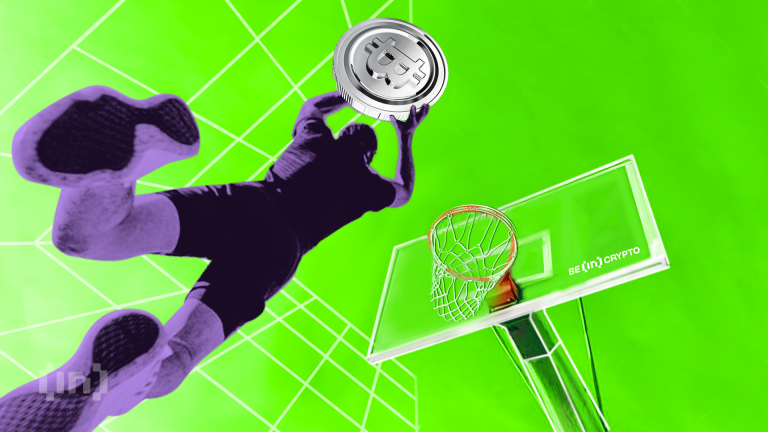
Finding a balance between work and personal life can be tough, but it’s important for your overall happiness and success. This article will explore different ways to help you achieve a healthy work-life balance. We’ll cover setting boundaries, delegating tasks, using technology wisely, taking care of yourself, and promoting balance in the workplace. We’ll also look at real-life examples and how to adapt these strategies to fit your needs.
Key Takeaways
- Set clear boundaries between work and personal life to help manage your time better.
- Delegate tasks to your team to free up your schedule and build trust.
- Use technology smartly to boost productivity but also know when to unplug.
- Take care of your physical and mental health to stay energized and focused.
- Encourage a work-life balance culture in your workplace to support everyone.
Setting Boundaries for a Balanced Life

Achieving a balanced life starts with setting clear boundaries. This means defining when your workday begins and ends, and creating a routine that separates professional and personal time. Living without balance can lead to overwhelm and dissatisfaction, affecting mental and physical health. A balanced lifestyle improves well-being, productivity, and relationships. Here are some strategies to help you set boundaries effectively.
Defining Your Priorities
To find balance in your day-to-day life, you need to know what matters most to you. Spend some time reflecting on your top priorities, both at work and at home. This will help you allocate your time and energy more effectively. Remember, it’s okay to prioritize self-care activities like yoga or journaling.
Creating a Manageable Schedule
A well-structured schedule can make a world of difference. Start by setting your work hours and communicating them clearly to colleagues and clients. Designate a specific area for work, especially if you’re working from home, to reinforce a psychological boundary. Don’t forget to schedule personal activities and commitments into your calendar just as you would with work meetings. This ensures that your personal time is protected and valued.
Learning to Say No
One of the hardest but most important skills to master is learning to say no. It’s essential to recognize your limits and not overcommit. Saying no to additional tasks or social engagements can help you maintain a healthier balance between work and life. This doesn’t mean you have to decline every opportunity, but be selective and mindful of your capacity.
Establishing a routine enhances control and reduces stress. By setting clear boundaries, you can create a more balanced and fulfilling life.
Empowering Your Team Through Delegation

Identifying Delegable Tasks
Delegation is a powerful tool for achieving work-life balance. Start by identifying tasks that can be handed off to others. Focus on tasks that don’t require your unique expertise. This allows you to concentrate on what truly matters.
Providing Clear Instructions
Once you’ve identified the tasks, provide clear and concise instructions. This ensures that your team knows exactly what is expected. Clear communication is key to successful delegation and helps in mastering the juggle between work and family life.
Building Trust Within Your Team
Trust is the foundation of effective delegation. When you trust your team, they feel empowered and motivated. Building trust takes time but is essential for a balanced lifestyle. Remember, a trusted team can help you embrace a balanced lifestyle, enhancing overall well-being.
Delegation not only lightens your load but also empowers your team, fostering a positive work environment. Embrace it to achieve a harmonious work-life balance.
Harnessing Technology for Better Balance
In today’s fast-paced world, technology can be both a friend and a foe when it comes to achieving work-life balance. Using the right tools and setting boundaries can help you stay productive without feeling overwhelmed. Here are some strategies to harness technology for a better balance in your life.
Using Productivity Tools
Productivity tools can be a game-changer in managing your time effectively. Apps like Trello, Asana, and Slack can help you organize tasks, set deadlines, and communicate with your team efficiently. These tools not only streamline workflows but also ensure that you stay on top of your responsibilities without feeling swamped.
Effective time management, teamwork, and leadership are essential for success. Prioritizing tasks and using digital tools can enhance productivity.
Establishing Digital Boundaries
Setting digital boundaries is crucial to prevent technology from taking over your life. Decide on specific times to check emails and messages, and stick to them. This way, you can focus on your personal life without constant interruptions. Remember, it’s okay to disconnect and take a break from your devices.
Scheduling Regular Digital Detoxes
Regular digital detoxes are essential for mental well-being. Allocate time each week to unplug from all digital devices. Whether it’s a few hours or an entire day, this break can help you recharge and return to work with a fresh perspective. Practicing digital mindfulness and promoting healthy work habits can make a significant difference in your overall well-being.
Prioritizing Self-Care for Well-Being

Incorporating Physical Activity
Engaging in regular physical activity is essential for maintaining both physical and mental health. Exercise not only boosts your energy levels but also enhances your mood and overall well-being. Whether it’s a morning jog, a yoga session, or a dance class, find an activity that you enjoy and make it a part of your daily routine.
Learning how to prioritize self-care is all about being in tune with yourself and your own needs.
Ensuring Adequate Sleep
Prioritize quality sleep for better focus and energy. Aim for at least 7-8 hours of sleep each night to ensure you’re well-rested and ready to tackle the day. A consistent sleep schedule can significantly improve your productivity and emotional intelligence.
Practicing Mindfulness and Relaxation
Incorporate mindfulness practices such as meditation and breathing exercises into your daily routine. These practices can help reduce stress, improve focus, and enhance emotional well-being. Even a few minutes of mindfulness each day can make a significant difference in managing stress and maintaining a balanced life.
Self-care is essential for well-being; engage in activities that recharge you, like mindfulness, nature walks, or hobbies.
By focusing on self-care, you nourish both your emotional and physical health, fostering positive relationships and a more balanced life.
Promoting Work-Life Balance in the Workplace
Leading by Example
Leaders play a crucial role in setting the tone for work-life balance. When managers and executives prioritize their own well-being, it sends a powerful message to the rest of the team. This can help in creating an inclusive and thriving workplace for everyone. By taking regular breaks, avoiding after-hours emails, and using their vacation days, leaders can model the behavior they wish to see in their employees.
Implementing Flexible Work Policies
Flexible work policies are essential for supporting your team’s work-life balance. Options like remote work, flexible hours, and job sharing can make a significant difference. These policies help employees manage their professional and personal commitments more effectively, reducing stress and increasing job satisfaction. A supportive work environment will encourage employees to repeat beneficial habits, promoting both satisfaction and productivity.
Encouraging Time Off and Wellness Programs
Encouraging employees to take their allotted time off and participate in wellness programs is vital. Paid time off allows employees to recharge and spend quality time with their loved ones. Wellness programs, such as fitness classes or mental health days, can also help in stress management. By promoting these initiatives, companies can foster a more engaged and satisfied workforce.
A positive work environment can go a long way in promoting a healthy work-life balance. Encourage open communication, provide opportunities for professional development, and recognize employee achievements. A positive work culture fosters a sense of community and helps employees feel supported and valued.
Real-Life Examples of Work-Life Balance

Arianna Huffington’s Journey
Arianna Huffington, the founder of The Huffington Post, learned the hard way about the importance of work-life balance. After collapsing from exhaustion in 2007, she realized that self-care and sleep were non-negotiable. Now, she champions a balanced lifestyle, integrating mental, physical, and emotional well-being. Her story underscores the need for harmony between work, personal life, and self-care to prevent burnout and enhance satisfaction.
Jeff Weiner’s Buffer Time
Jeff Weiner, the former CEO of LinkedIn, is a strong advocate for creating space in your schedule. He introduced the concept of "buffer time"—periods set aside for reflection and strategic thinking. This practice not only helps in managing work stress but also allows for personal time, making him a better leader. Weiner’s approach highlights the significance of regular reviews and adjustments to maintain a balanced life.
Sheryl Sandberg’s Work-Life Fit
Sheryl Sandberg, the COO of Facebook, believes in the concept of "work-life fit." In her book "Lean In," she shares how she manages her professional and personal responsibilities. Sandberg emphasizes the importance of leaving work at a set time to prioritize family and personal life. Her approach shows that flexible timings play a huge role in achieving a balanced life, impacting both well-being and career progression.
Adapting Work-Life Balance Strategies to Your Needs
Regularly Reviewing Commitments
Achieving a balanced life is a continuous journey. Regularly reviewing your commitments helps you stay on track. Take time each month to assess your schedule and see if it aligns with your priorities. This practice ensures that your work engagements don’t consistently encroach upon your personal time, preserving your overall well-being.
Making Necessary Adjustments
Life is dynamic, and so should be your approach to work-life balance. When you notice imbalances, make the necessary adjustments. This could mean reallocating time for personal activities or seeking support from your team. Remember, flexibility is key to maintaining a harmonious life.
Advocating for Supportive Policies
A supportive work environment is crucial for achieving balance. Advocate for policies that promote work-life balance, such as flexible working hours or mental health days. Being proactive in your workplace can lead to a more balanced and fulfilling life for everyone.
Embracing a balanced lifestyle through effective time management and limiting distractions is essential for personal growth and well-being. Techniques like the Pomodoro technique can enhance productivity, while self-reflection contributes to continuous improvement.
Conclusion
Finding the right work-life balance is a journey, not a destination. It’s about making small changes and being mindful of your needs. Remember, it’s okay to set boundaries and prioritize yourself. By doing so, you can enjoy a more fulfilling life both at work and at home. Embrace the process, and don’t be afraid to adjust as you go. With the right strategies, you can achieve a balance that works for you, leading to a happier and healthier life.



